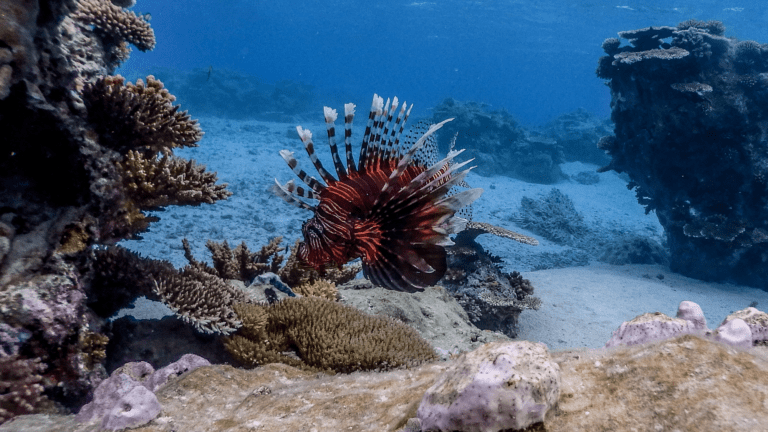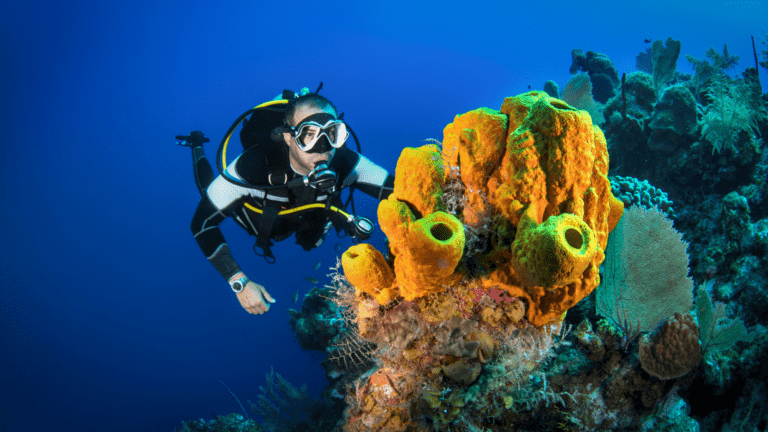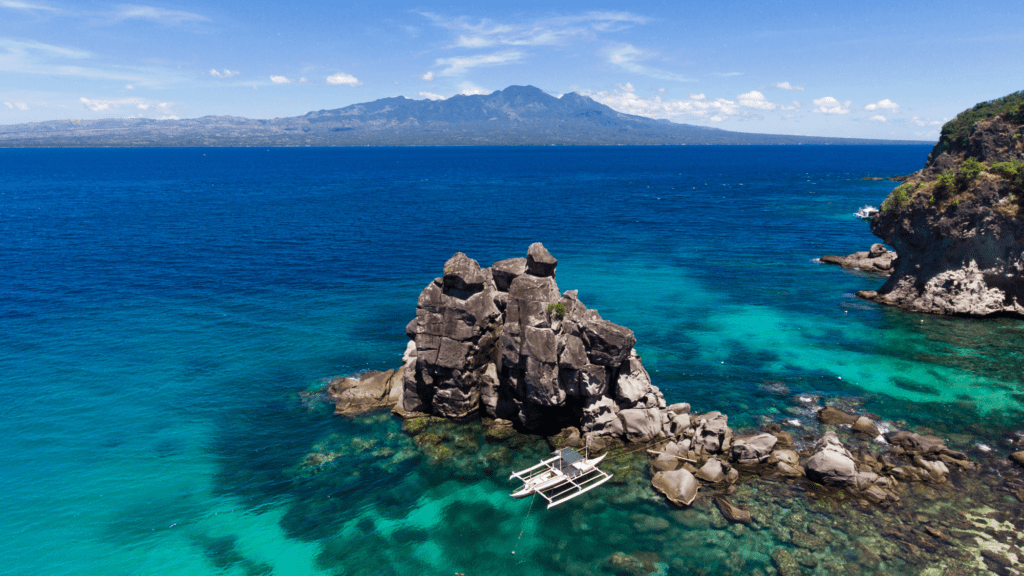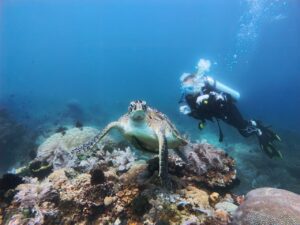Apo Reef is an absolute haven for divers and is sure to be an unforgettable underwater experience. Known for its rich biodiversity and stunning coral formations, it is one of the largest contiguous coral reef systems in the world, and it offers some of the best diving in the Philippines.
If you’re planning a trip to Apo Reef, here’s a guide to some of its top dive sites, along with tips on how to make the most of your underwater adventure.
1. Apo Main Wall
The Apo Main Wall is one of the reef’s most iconic dive sites. This wall dive is impressive, with steep drop-offs plunging to around 100 meters. The wall is covered in vibrant corals, sponges, and sea fans, home to a wide variety of marine species. Schools of jacks, snappers, and barracudas are commonly spotted here, swimming alongside graceful sea turtles and reef sharks.
Due to its sheer depth and strong currents, Apo Main Wall is suited for more experienced divers. However, even beginners can enjoy the shallow portions of the dive, where the visibility often extends beyond 30 meters, offering crystal-clear views of the colorful marine life.
Diver Tip: Since this dive can get deep very quickly, make sure to monitor your depth and maintain buoyancy.
2. Shark Ridge
For thrill-seekers, Shark Ridge is a must-visit site at Apo Reef. True to its name, this spot is famous for sightings of blacktip and whitetip reef sharks. The underwater topography includes slopes, ridges, and rocky outcroppings, providing a dynamic backdrop to the dive.
Apart from sharks, you can expect to see large schools of trevally, barracuda, and even the occasional manta ray gliding through the current. Shark Ridge is best suited for advanced divers because of the strong currents that sweep across the site, making for an exciting but challenging dive.
Diver Tip: Stay close to your dive buddy and follow your guide’s instructions when currents get strong. It’s also a good idea to remain calm and conserve air in the deeper, more challenging sections.

3. Merope Rock
Merope Rock is a pinnacle that rises from the depths, creating a beautiful, isolated dive site filled with life. The rock itself is adorned with soft corals and gorgonians, attracting a variety of marine creatures. Schools of fusiliers and snappers swirl around the rock, while eagle rays, turtles, and even the occasional hammerhead shark can be seen cruising the deeper waters.
The structure of Merope Rock makes it a great dive for both macro and wide-angle photography. Nudibranchs, shrimp, and other small critters inhabit the cracks and crevices, while the pinnacle’s vertical walls create dramatic underwater vistas.
Diver Tip: Bring a dive torch to explore the nooks and crannies of Merope Rock. This will help you spot some of the smaller creatures that often hide in the shadows.
4. Binangaan Drop-Off
Binangaan Drop-Off is another spectacular wall dive, featuring a vertical cliff that plunges deep into the ocean. The wall is teeming with hard and soft corals, along with an abundance of reef fish such as angelfish, triggerfish, and butterflyfish. Larger predators like groupers, tuna, and reef sharks are often seen patrolling the area.
This site offers excellent conditions for underwater photography, thanks to the clear water and vibrant coral formations. The drop-off also includes several ledges and small caves where divers can explore further.
Diver Tip: Keep an eye out for pelagic species, especially near the deeper sections of the drop-off. This is also a good place to practice your buoyancy control, as the wall extends into very deep water.
5. Cayangan Drop-Off
Cayangan Drop-Off is less frequented by divers, making it a great spot for those who want a quieter experience. The site offers a mix of coral-covered walls and sandy slopes, where divers can find stingrays buried in the sand and sea turtles gliding by. Schools of barracudas and jacks are also common.
Cayangan Drop-Off is a great choice for both beginner and experienced divers, as it offers a range of depths and marine life. The site’s coral gardens are also ideal for those interested in exploring the smaller species, such as nudibranchs and reef fish.
Diver Tip: Take your time at Cayangan Drop-Off and focus on the smaller details, like the tiny critters hiding in the coral. It’s a site where macro photographers will find plenty of subjects to capture.

How to Dive Apo Reef Responsibly
Apo Reef supports Marine Conservation and Biodiversity. With that in mind, practicing sustainable diving is key to preserving its delicate environment. Coral reefs are fragile, and even a slight disturbance can cause long-term damage. Here are a few simple ways you can dive responsibly:
- Mind Your Buoyancy: Maintaining neutral buoyancy is essential to avoid accidentally damaging the corals. Avoid touching or standing on coral structures, as they are extremely sensitive.
- Use Reef-Safe Sunscreen: Many sunscreens contain chemicals that harm marine life. Make sure to use a reef-safe sunscreen that doesn’t contain oxybenzone or octinoxate.
- Don’t Litter: Make sure to dispose of any waste properly and avoid using single-use plastics while on your dive trip.
- Respect Marine Life: While it’s exciting to encounter large creatures like sharks and turtles, avoid touching or chasing them. Respect their space and observe from a safe distance.
Exploring Apo Reef with Casalay Boutique Villas & Dive Resort
If you’re planning a trip to Apo Reef, staying at Casalay Boutique Villas & Dive Resort can make the entire experience more convenient and enjoyable. This dive resort offers comfortable accommodations, personalized service, and expert dive guides who can take you to the best sites around Apo Reef.
Additionally, Casalay is committed to sustainable tourism. They promote eco-friendly practices such as reef-safe diving guidelines and work closely with local communities to ensure that Apo Reef remains protected for future generations.
Summary
Apo Reef is one of the world’s most stunning dive destinations, with its vast coral formations, diverse marine life, and thrilling dive sites. By diving responsibly and choosing accommodations like Casalay Boutique Villas & Dive Resort, you’ll not only enjoy a memorable underwater adventure but also help protect this precious ecosystem for years to come.
Author: Zach Yanuario



